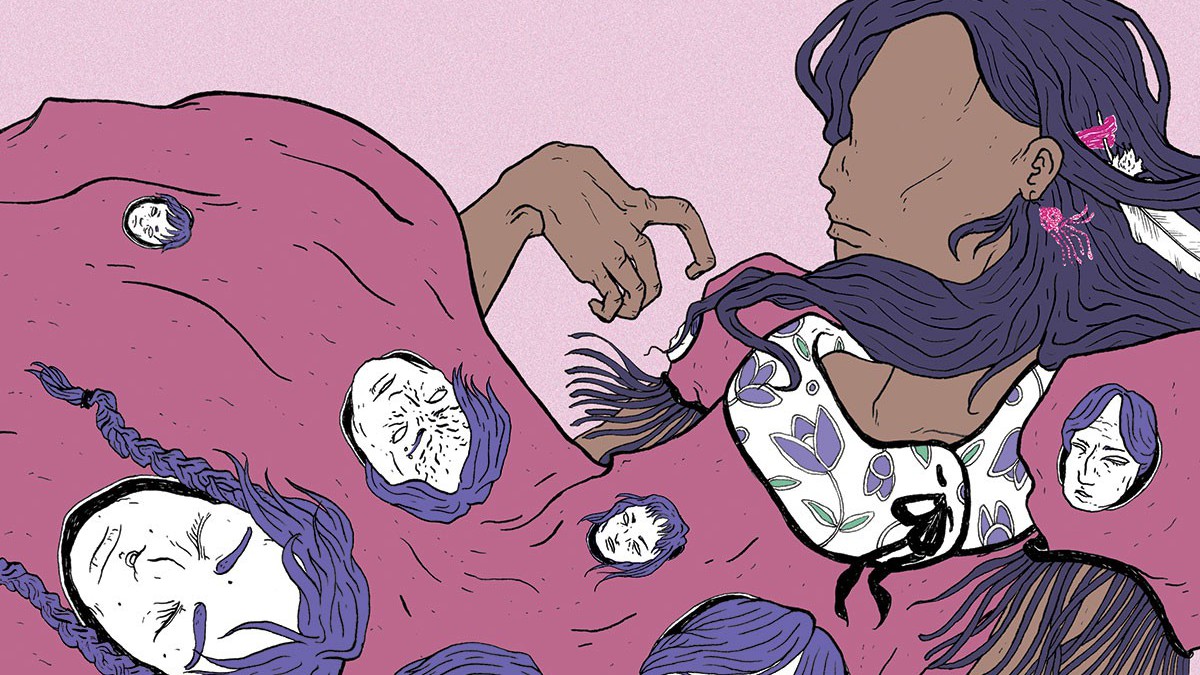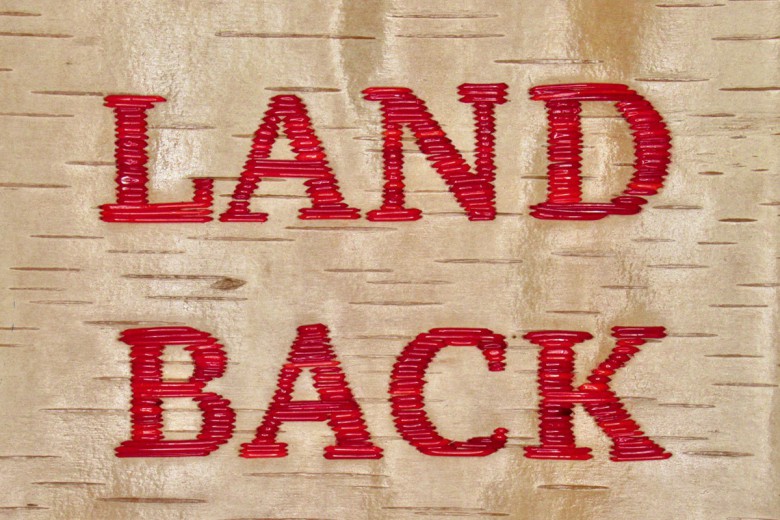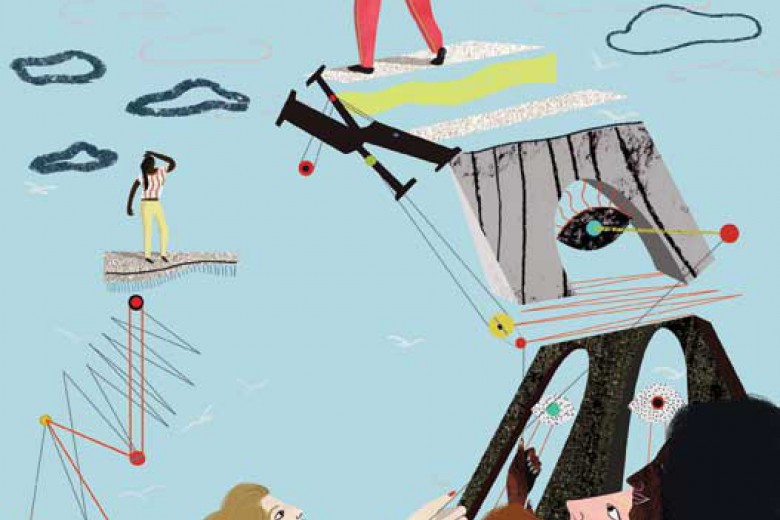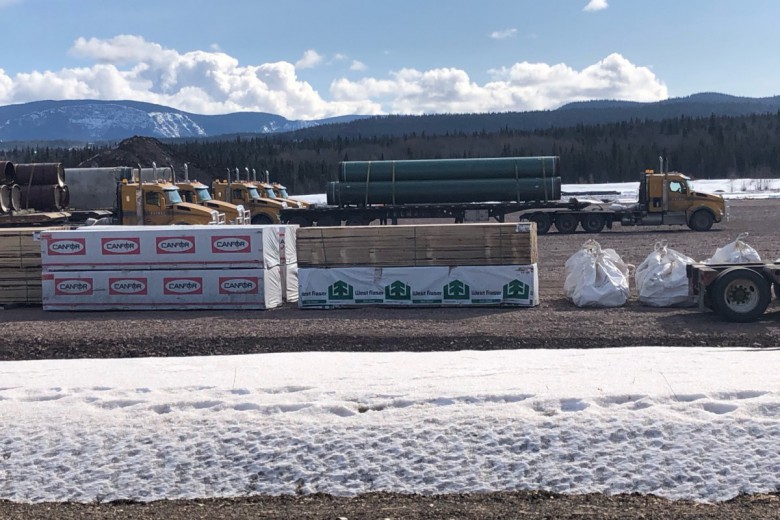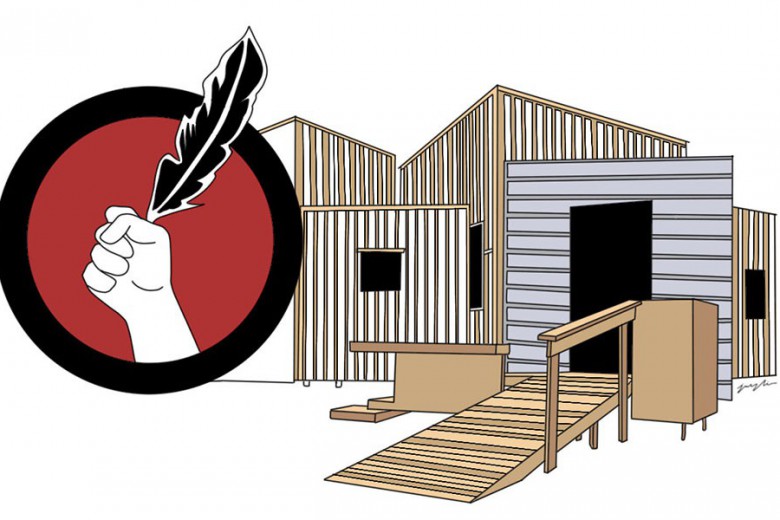In the winter of 2016, I dreamed incessantly of the front lines, of putting my body in front of police, bulldozers, and extractive corporations to ensure Indigenous sovereignty. During this time, my social media was filled with constant updates on Standing Rock, abundant with #NODAPL in every post. I was paying close attention to what was happening with the Standing Rock Sioux Tribe and their opposition to the Dakota Access Pipeline that would cross through their sacred and sovereign land. I was preparing myself to make the journey to the Oceti Sakowin camp when the Obama administration denied a key permit for the pipeline. I was no longer needed across the medicine line. My dreams were filled with the image of hundreds of bison cresting a hilltop, dust clouds surrounding the herd, the sound of their tremendous hoofbeats resounding on the horizon.
Seven months later, I started medically transitioning, and with that came the realization that my relationship with the front lines would change. Earlier in 2016, news broke of a string of suicides and suicide attempts in Attawapiskat First Nation in Ontario, a result of poverty, intergenerational trauma, and hopelessness under colonial rule. The small, fly-in community of barely 1,500 was shaken. I responded by organizing a rally at my university and educating people about the mental health crises happening in Indigenous communities across Canada.
It seemed that my non-binary identity was still hard to comprehend, even more so in many of the Indigenous circles in which I ran.
Being read as a man at the time, I noticed how I was listened to and respected more than my co-organizers, who identified as women. I had been quite public about being non-binary in 2015, but I was still perceived as male; many people simply could not wrap their heads around what “non-binary” meant in Kamloops, British Columbia. As the hormones took effect later that year, I began to present more and more feminine. It seemed that my non-binary identity was still hard to comprehend, even more so in many of the Indigenous circles in which I ran. Though my pronouns didn’t change, I began to get misgendered more often; it looked like using “they” was easier when I wasn’t changing my hormone levels.
This February, I found myself in a collective of Two-Spirit and Indigiqueer youth who worked separately and together to plan actions and participate in blockades in support of the Wet’suwet’en People, who were fighting against Coastal GasLink’s illegal occupation and development of their sacred and sovereign territory. It was two years after I had experienced numerous instances of transphobia during a 2018 action where I helped to block the gates to the Kinder Morgan pipeline expansion on Burnaby Mountain. It took years to find this collective of Two-Spirit and Indigiqueer youth; we organized by creating strong whisper networks, and we rallied and disrupted the settler state across this so-called country. Many actions, barricades, and sit-ins occurred, all demanding that Indigenous sovereignty be respected and that the RCMP vacate Wet’suwet’en yintah.
I took solace in the knowledge that some of us were trans, and all of us were unapologetically queer. But I still couldn’t shake the fact that on many of the front lines I occupied, I was the only Indigenous trans woman I knew of. So many of my sisters are dead. So many of us barely make it out our front doors – some making it just far enough to the cities, where we meet a crueller fate. So few of us make it to the front lines, and even fewer survive them. No matter how much I tried to push away these unsettling feelings, it’s become very clear: NDN Country is extremely transphobic and is very complicit in killing Indigenous trans women. It’s not alone. I haven’t yet experienced a community where transphobia was absent – not even the LGBTQ2S+ community has kept their hands clean.
So many of my sisters are dead. So many of us barely make it out our front doors – some making it just far enough to the cities, where we meet a crueller fate. So few of us make it to the front lines, and even fewer survive them.
No matter the circumstance across the “Americas,” the language around queerness is colonial, and the word “queer” is ill-equipped for talking about gender through a decolonial lens. While “queer” literally means “out of the ordinary,” many nations across Turtle Island had different relationships to those we now call “queer.” Often in these communities, we were revered, honoured, and given leadership positions because we were believed to walk through many worlds, to see beyond what was in plain sight. To know my people historically would have fought for my life makes it even more devastating to see the lives of Black and Indigenous trans women end in violence. This shift – from honouring to killing Black and Indigenous trans women – was the result of the cultural and physical genocide we experienced and the theft of the land we safeguarded.
In fact, colonizers turned Indigenous trans women into monsters, for it was easier for them to justify the slaughter of our people to God if we were monsters. Across our territories we were demonized, turned into the villains, and killed. Who knows how many stories were lost in this culling? How many of us were storytellers, parents, and ceremony leaders? Now NDN Country is rife with men leading ceremonies and protocol, forcing Indigenous women to merely watch, many not even allowed to touch a drum.
How can Land Back be fully realized and actualized without prioritizing the most marginalized among us? To return the land is one thing, but who the land goes to and who it is governed by is important. In her essay for GUTS Magazine, “(Indigenous) Governance is Gay,” Emily Riddle helped me fully realize that NDN self-governance must include Indigenous women, queer, trans, and Two-Spirit kin: “even though we have been shut out of what are generally deemed spaces of Indigenous Governance and Politics, governance is merely about how we relate to each other as collectivities,” she writes. Riddle unearths the mechanisms by which colonial patriarchy has not only impacted our traditions and cultures, but how it has also allowed numerous Indigenous trans women to die.
To know my people historically would have fought for my life makes it even more devastating to see the lives of Black and Indigenous trans women end in violence.
I know from personal experience that the transphobia in our communities is enough to kill us. But I can only speak to my own Indigeneity and not to visibility racialized trans women’s experiences. When racism, poverty, and patriarchal coloniality all come into play, BIPOC trans women experience much more violence and diminished access to resources (such as medical care, hormones, housing, and mental health care) than their cis and white counterparts.
Every week, I hear about Black trans women dying gruesome and violent deaths. Each time, I let their name sit on my tongue and weigh heavy; names I’ll only ever see immortalized on Instagram grids and Twitter hashtags. Monika Diamond. Riah Milton. Dominique “Rem’Mie” Fells. Brayla Stone. Nina Pop. I am sure there are many more, deadnamed and misrepresented, experiencing more violence even after their deaths.
To fail to include our Black peers in our Land Back movement speaks to our legacy of anti-Blackness. It also disregards the displacement and trauma we both have experienced on these lands. Indigenous people were killed for the land, but it was so often enslaved Black people who built the cities we now call home.
Today, our access to self-representation and public queer existence is thanks to Black and brown trans women and sex workers who rebelled against police brutality and discrimination. My ability to exist today as an Indigenous trans woman is thanks to Marsha P. Johnson, Miss Major, Felicia “Flames” Elizondo, Aiyyana Maracle, and so many more I can’t name.
To fail to include our Black peers in our Land Back movement speaks to our legacy of anti-Blackness. It also disregards the displacement and trauma we both have experienced on these lands.
To protect, prioritize, and platform Black and Indigenous trans women in social movements – especially ones fighting for Land Back and environmental justice – we must undo our own abhorrent transmisogyny without placing this labour on Black and Indigenous trans women. I am exhausted from constantly having to hold back my traumatized and very emotional response to transmisogyny in order to educate someone on how they just hurt me. In the Land Back movement there must be space made for Black and Indigenous women to self-actualize themselves and feel safe participating in this reclamation work. The work of advocating for and protecting Black and Indigenous trans women must be taken up by cis, white, non-Indigenous, and non-Black people. It’s your job to betray the very patriarchy and transmisogyny that upholds the current colonial state.
Land Back is about so much more than its origins as a meme and more than just returning the land. It’s about restoring the cultural importance of non-colonial gender identities and responsibilities and shedding the colonial grasp that suffocates us all (though some more than others). For Black and Indigenous trans women, Land Back is the promise of safety, of being able to self-actualize, and to not just survive, but thrive. We must ask who isn’t in the room, why they aren’t there, and if it’s safe for them to join. That’s our work, our duty, and our responsibility – to make sure our movements unabashedly welcome trans women. Those participating must be aware, mindful, and prepared to do what it takes to not only achieve Land Back, but to be in relation with Black and Indigenous trans women, have the hard conversations, and be uncomfortable in growing and ensuring the survival of Black and Indigenous trans women.
I’ll leave you with this: How have you participated in transmisogyny? How have you been anti-Black? How have you maintained colonial gender roles? I ask these questions because you have done so. Everyone has, and you must be responsible for your own education and growth. This is important in being accountable to the many Black and Indigenous trans women we’ve failed and continue to fail.
This story was financially supported by a bursary from the Journalists for Human Rights’ Indigenous Reporters Program.


